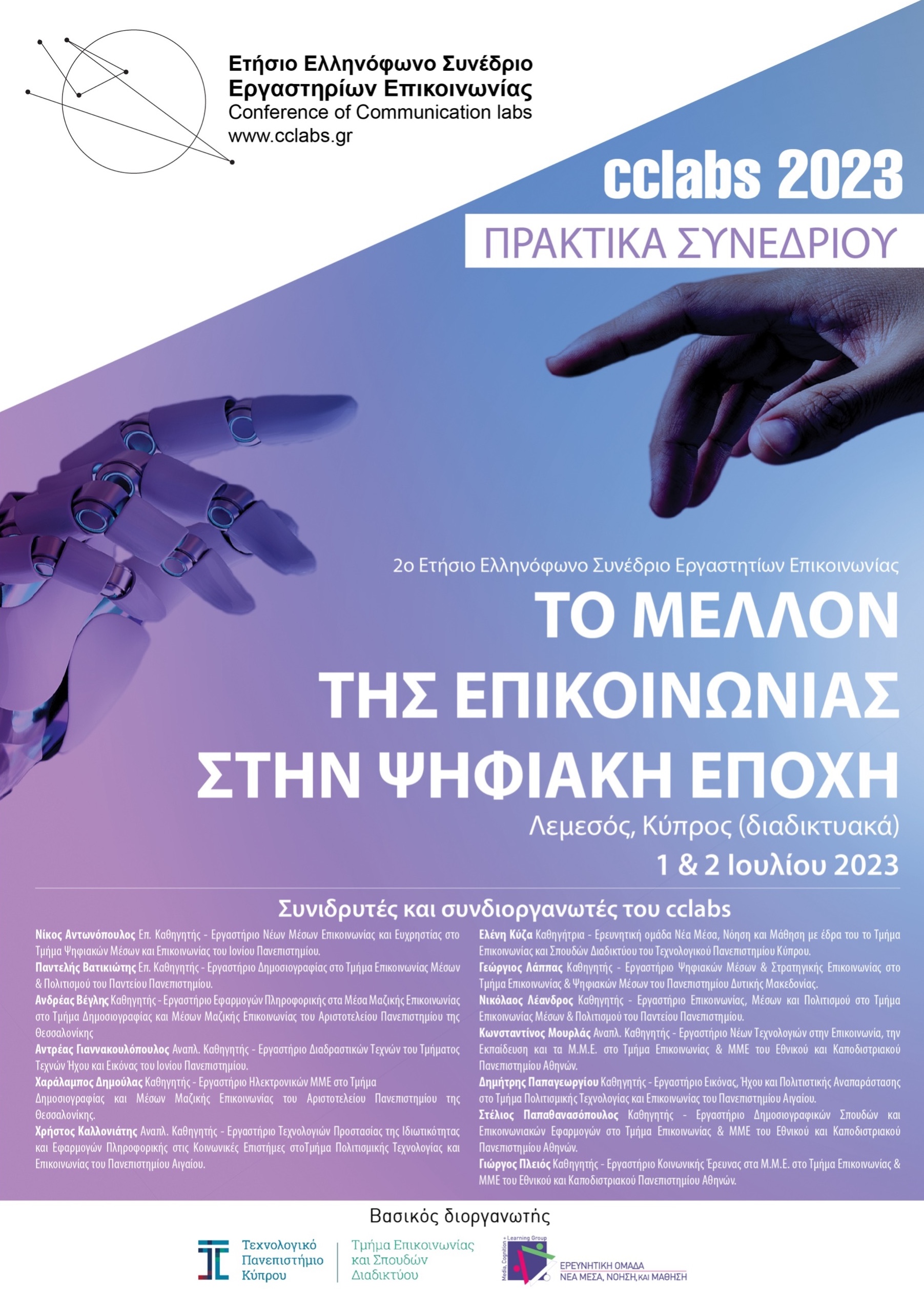Μη λεκτική επικοινωνία σε εικονικά περιβάλλοντα μάθ

Περίληψη
Η έκρηξη της χρήσης των εικονικών περιβαλλόντων μάθησης κατά τη διάρκεια της πανδημίας ανέδειξε την χρησιμότητα της ένταξης τους στην εκπαιδευτική διαδικασία, ενώ πλέον η μεθοδολογία χρήσης τους κατά τη διάρκεια αυτής απασχολεί πληθώρα επιστημόνων και επαγγελματιών. Ταυτόχρονα, οι τεχνολογικές εξελίξεις στον τομέα της εικονικής πραγματικότητας ωθούν την ανάπτυξη και αξιολόγηση πρωτότυπων εικονικών περιβαλλόντων μάθησης που επιτρέπουν την σε πραγματικό χρόνο επικοινωνία μεταξύ απομακρυσμένων εκπαιδευτών και εκπαιδευόμενων διάμεσό εικονικών εκπροσώπων υψηλής πιστότητας. Η παρούσα εργασία συζητά το σχεδιασμό, την ανάπτυξη, και την αξιολόγηση της χρηστικότητας και χρησιμότητας ενός εικονικού περιβάλλοντος μάθησης το οποίο επιτρέπει σε έναν/μία εκπαιδευτή/τρια να ελέγξει σε πραγματικό χρόνο έναν/μία εικονικό εκπρόσωπο μεταφέροντας σε αυτόν/ην λεπτομερή μη λεκτικά σήματα επικοινωνίας, όπως την κίνηση του σώματος του/της, την κίνηση της κόρης των ματιών του/της και των δακτύλων του/της, αλλά και των εκφράσεων του προσώπου του/της. Το εικονικό περιβάλλον μάθησης αξιολογήθηκε στο πλαίσιο διάλεξης από πραγματικούς εκπαιδευόμενους δίνοντας σημαντικές κατευθυντήριες γραμμές για την ανάπτυξη ανάλογων συστημάτων στο μέλλον.
Λεπτομέρειες άρθρου
- Πώς να δημιουργήσετε Αναφορές
-
Κασαπάκης Β., Dzardanov, E., & Αγελαδά Α. (2024). Μη λεκτική επικοινωνία σε εικονικά περιβάλλοντα μάθ. Ετήσιο Ελληνόφωνο Επιστημονικό Συνέδριο Εργαστηρίων Επικοινωνίας, 2(1), 91–97. https://doi.org/10.12681/cclabs.6455
- Ενότητα
- cclabs2

Αυτή η εργασία είναι αδειοδοτημένη υπό το CC Αναφορά Δημιουργού 4.0.





